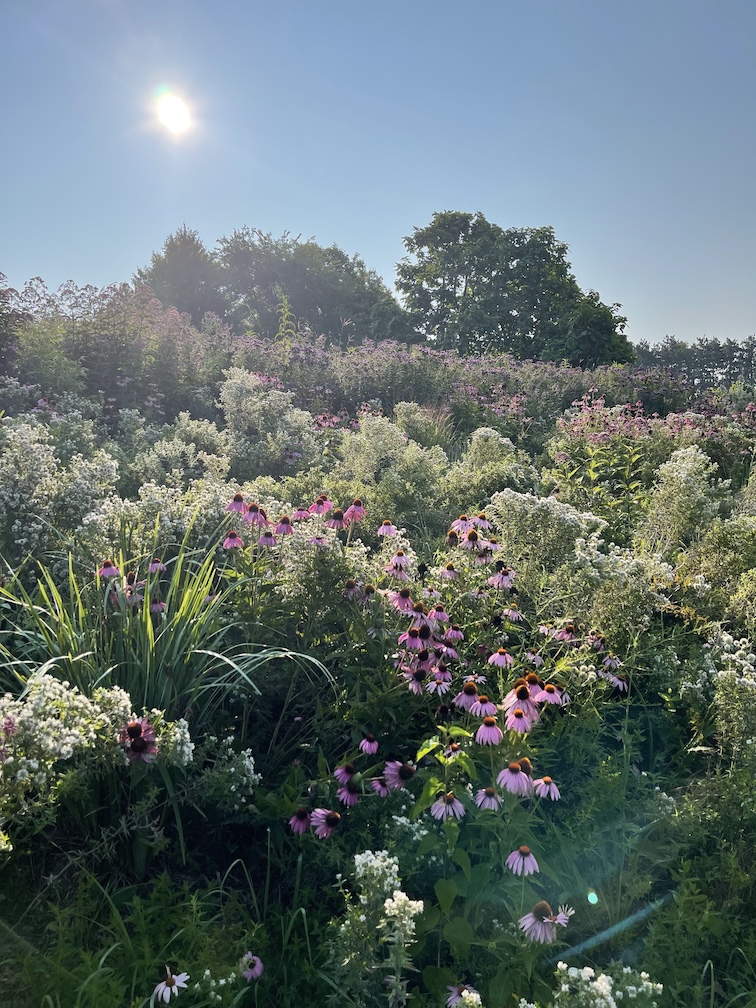
Lotus Flower Farm


Lotus Flower Farm in Galien, Michigan, specializes in tomato production. They cultivate open-air tomato fields and incorporate winter rye and garlic cover crops. The farm also utilizes hoop houses equipped with fans for optimal tomato growth. Water for irrigation is sourced from an on-site well, serving the tomato fields abundant with plants. To maximize land use, onions and basil are strategically planted between the rows. The farm follows regenerative principles, practicing no-till and no-dig techniques, applying organic compost, and using great care in weed management to minimize disturbance. Spanning grassland, woodlands, trails, ponds, and a personal garden, Lotus Flower Farm embraces biodiversity within its diverse landscape. Preserving heritage seed varieties, promoting biodiversity, and producing nutritious goods are key priorities for this farm.
Product Types
Operation Highlights



Region Conditions:
Michigan
Michigan experiences a humid continental climate in the southern regions and a humid subarctic climate in the northern areas. Summers are warm with occasional heatwaves, while winters are cold and snowy, especially in the Upper Peninsula. Michigan’s Great Lakes influence its climate, moderating temperatures and contributing to lake-effect snowfall in winter. The state’s diverse geography includes forests, lakeshores, and urban areas, supporting industries such as manufacturing, agriculture, and tourism.



The Principals of Soil Health at Lotus Flower Farm
Nurturing the soil is the foundation of regenerative agriculture. At Regenified, we measure the implementation of all six soil health principles because they are essential for regeneration. Each principle contributes to the soil’s overall health, creating a system greater than the sum of its parts.


Right Context
100% of crops grown are appropriate for region

Right Context
Farmers prioritize growing plants and animals suited to their specific environment. By understanding their unique context, they can optimize production while minimizing external inputs.


Minimized Disturbance
100% no-till operation

Minimized Disturbance
Rather than tilling or using chemicals that disrupt soil structure and microbial life, regenerative farmers embrace no-till practices and minimize chemical inputs to preserve the integrity of the soil.


Soil Armor
Cover crops provide armor in hoop houses and open fields

Soil Armor
Keeping the soil covered with organic matter such as cover crops or crop residues prevents erosion, improves water infiltration and retention while also providing habitat for beneficial organisms.


Enhanced Diversity
Continuing to add more cover crop diversity, excellent biodiversity over property

Enhanced Diversity
Maximizing diversity within both plant species and beneficial organisms above and below ground enhances ecosystem resilience and promotes natural pest control.


Living Root
100% of the operation meets the “fully applied” level of this principle

Living Root
Maintaining living roots in the soil at all times ensures continuous nutrient cycling by supporting microbial activity crucial for healthy soils.


Animal Integration
Adding livestock would drive gains in ecosystem outcomes

Animal Integration
Integrating livestock into farming systems allows for the symbiotic relationship between animals and the land. Their grazing patterns contribute to nutrient cycling and improve soil fertility.
A Word From the Farm



Ecosystem Outcomes
Ecosystem processes are the interconnected systems that drive the health and resilience of our land and water resources. Good land management positively impacts those ecosystem processes. Our Verification Standard evaluates these vital processes, ensuring the regeneration of the ecosystem.
Lotus Flower Farm - Gallery
See how we’re changing the world, acre by acre.
Our Certification











